A Sustainable Energy Efficiency Solution in Power Plant by Implementation of Perform Achieve and Trade (PAT) Mechanism ()
1. Introduction
Low Carbon Development Strategies in the developing countries undertake domestic actions on climate mitigation vis-à-vis economic growth. An Enhance Energy Efficiency Scheme (EEES) can be one of the policy tools to promote adaptation actions in consideration to energy demand and supply scenario. The possibility of implementing an EEES in India needs to be explored from institutional perspectives in relation to the existing carbon market in India, particularly the Renewable Energy Certificate (REC), Clean Development Mechanism (CDM), Perform, Achieve and Trade scheme in line with Nationally Appropriate Mitigation Actions (NAMAs).
India is the third largest producer of greenhouse gases and its per capita basis emission is 1.4 t CO2. Out of the eight missions initiated under National Action Plan for Climate Change, three missions focused on mitigation are conceptualised in 2008 namely, National Solar Mission, National Mission for Enhanced Energy Efficiency, National Mission for a Green India. The energy demand and supply considerations create a need for the PAT mechanism. The scheme is in the initial stages of implementation by Bureau of Energy Efficiency (BEE) as a part of the National Mission on Enhanced Energy Efficiency (NMEEE), one of the missions in National action Plan for Climate Change [1]. The PAT scheme, started by Bureau of Energy Efficiency, covers eight energy intensive Indian industrial sectors. Across these sectors, 478 of the most energy intensive installations called Designated Consumers (DC) are participating, with 144 from the power sector alone [2].
The energy saving targets have been allocated to each Designated Consumer. In case, a DC exceeds its energy saving on specified energy consumption (SEC) target as defined by PAT scheme: it is issued with energy saving certificates (ESCert) and to penalise for deficiency in target, DC is required to purchase ESCerts. Thereafter, ESCerts will be issued and can be traded between entities. The certificates traded each represent a metric tonne of oil equivalent (mtoe). BEE has targeted 6.6 million mtoe to be saved by the scheme over the first cycle (2012 to 2015) and multi fold rise in savings expected in further cycles out to 2020 [3].
The PAT programme launched by BEE is reviewed and summarised to propose an ideal model for current scenario for Indian industries. The PAT model, with more added institutions is proposed to create a balance and linkage among the existing network to extend support to DCs based on measurable performance indicators [4-7]. The PAT programme is India specific and defines its terminology to focus on highly energy consuming industries, which are explained in 3rd Section. The PAT programme implemented by the network around the various agencies from central and state government is explained in 4th Section. We then present the model of institutional network and ESCert trading in the expanded PAT environment in 5th Section. In last Section, we present the conclusion and future work.
First, we present a short recap of the energy certification across globe.
2. Review of Energy Efficiency Models
The EU Emissions Trading System (EU ETS) is a cornerstone of the European Union’s policy to combat climate change and its key tool for reducing industrial greenhouse gas emissions cost-effectively. The first and biggest international scheme for the trading of greenhouse gas emission allowances, the EU ETS covers some 11,000 power stations and industrial plants in 27 EU Member States plus Iceland, Liechtenstein and Norway. It covers CO2 emissions from installations such as power stations, combustion plants, oil refineries and iron and steel works, as well as factories making cement, glass, lime, bricks, ceramics, pulp, paper and board. The voluntary scheme Climate Change Agreements, Renewable Obligation (RO) & Emission Trading Scheme as well as mandatory schemes CRC Energy Efficiency Scheme, Tradable White Certificates, are implemented in United Kingdom [8-12].
The US RPS is a system which creates a market demand for renewable and clean energy supplies, based on the same principles as a Quota System and Connecticut adopted its RPS in 1998. US Acid Rain Programme was implemented in 1995, by the United States Environmental Protection Agency. Energy Efficiency Portfolio Standard (EEPS)-like laws are now in place in California, Colorado, Connecticut, Hawaii, Nevada, Pennsylvania, Texas, and Vermont. Chicago Climate Exchange, launched in 2003, is a voluntary, legally binding greenhouse gas reduction and trading system for emission sources and offset projects in North America and Brazil [13,14].
International Energy Agency (IEA) promoting Energy Efficiency and Demand-Side Management for global sustainable development and for business opportunities. The IEA Demand-Side Management Programme is an international collaboration of 14 countries working together to develop and promote opportunities for demandside management (DSM). In the EU, only the UK, Italy, Poland and France have implemented White Certificate (WhC) schemes, with different targets and design characteristics Australian federal government has introduce three energy efficiency certificate trading schemes namely; the Energy Savings Scheme (ESS) in the State of New South Wales (NSW), the Victorian Energy Efficiency Target scheme (VEET) in the State of Victoria and national capand-trade emissions trading scheme. Under a cap-andtrade emissions trading scheme, the Government set an annual cap on total emissions of carbon pollution covered by the scheme and issue a number of emissions permits equal to the cap [15,16].
The VEET scheme is a Victorian Government initiative promoted as the Energy Saver Incentive. It commenced on 1 January 2009 and is administered by the Essential Services Commission (ESC). Each certificate represents a tonne of greenhouse gas abated and is known as a Victorian energy efficiency certificate (VEEC). For the first three-year phase of the scheme (2009-11), the scheme target is 2.7 million VEECs per annum, increased to 5.4 million VEECs per annum during the second three-year phase, starting on 1 January 2012 [17].
The National Development Reform Commission in China launched the “Top-1000 Program,” which targets energy efficiency improvements in the 1000 largest enterprises that together consume one-third of all China’s primary energy [18].
India, a democratic country with states with different biodiversity, successfully implemented energy saving and RE generation with the support of central ministry. In additions, some of the schemes started by states, individually. Renewable Energy Certification (REC) programme is implemented by Central Electricity Regulatory Commission (CERC) under Jawaharlal Nehru National Solar Mission while the Bureau of energy efficiency launched the PAT programme under NMEEE mission in 2012 and the energy saving certificate (ESCert) will be issued after submission of year report by energy manager and review by BEE in 2013. PAT and REC programme are in addition to clean development mechanism (CDM) [19].
India has issued Host Country approval for 2305 projects targeting 716,590,823 Certified Emission Reduction (CER) Certificates across 13 sectors till March, 2012. The CDM approved reports for the successful issuance of CER is 459 with 36,884,665 CERs issued, and 17,759,280 CERs in 2012 [20,21]. As on June 30, 2012, China leads with 2101 registered CDM projects accounting for 48.9% followed by India (855 projects i.e. 19.9%) and Brazil (204 projects i.e. 4.7%) respectively. The national programme PAT is introduced in view of the less demand for CER in International market with reduced price varying from INR 230 ($ 4.50) to INR 300 ($6.00) in September-October, 2012
3. Perform Achieve Trade (PAT) Scheme in India
3.1. Design of Scheme
Perform, Achieve & Trade is a market based mechanism to enhance efficiency in energy intensive industries through certification of energy saving which can be traded. The market and institutional structure, as proposed by BEE would support the implementation of PAT mechanism for target achievements. The different operational models are adopted by consumers to meet the compliance targets [2,22-26] The whole process of PAT scheme includes sequential steps, namely goal setting, emission reduction, review, certification and trade.
The PAT scheme currently covers eight energy intensive Indian industrial sectors: thermal power plants, iron and steel, cement, textiles, chlor-alkali, aluminum, fertilisers and pulp and paper. Across these sectors, 478 of the most energy intensive installations. In phase I, 144 designated consumers are participating from power sector. The Table 1 provides the details about DCs on energy reduction target in ton of oil equivalent and percentage in comparison to present consumption [3].
The thermal power sector is a large consumer of energy and the application of a PAT target should serve to provide an additional focus on energy efficiency. There is scope in the future to deepen the scheme to cover additional (smaller) installations within the relevant energy intensive sectors. The PAT scheme document targeted selected eight sectors and fixed national energy saving target as shown in Figure 1 [2,27].
3.1.1. Base Line and Energy Input
The net energy input calculations for the Thermal Power Plant involves the following steps:
• Identify the fuel used for input and convert the calorific values of all forms of energy sources into a single unit, namely, ton of oil equivalent using the conversion formulae.
• For Ein, energy input, consider all forms of energy that is, electricity, solid fuel, liquid fuel, gaseous fuel, or any other form of energy imported into the plant for consumption as energy for production of output;
• In case DC does not have disaggregated figures for energy consumed, consider the net energy consumed for calculation both in baseline year and in the target year: provided that the said designated consumer shall give adequate reasons that it was not feasible to make adjustment for energy consumed.

Figure 1. Energy saving by PAT-courtesy BEE.
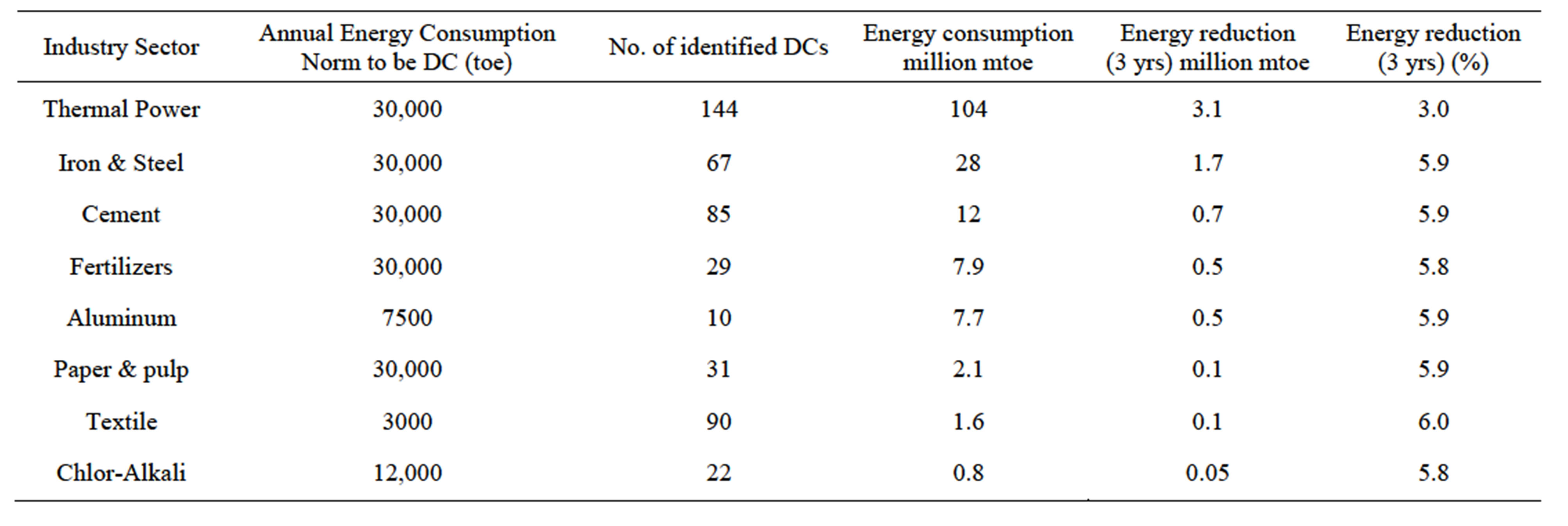
Table 1. Breakdown of sectors and targets for PAT scheme.
• Provided further that such designated consumer shall make necessary arrangements for disaggregation of data for energy consumption to ensure that actual energy consumed for production is considered in the next cycle.
Total energy input to the designated consumers’ boundary shall be estimated with the following expression:
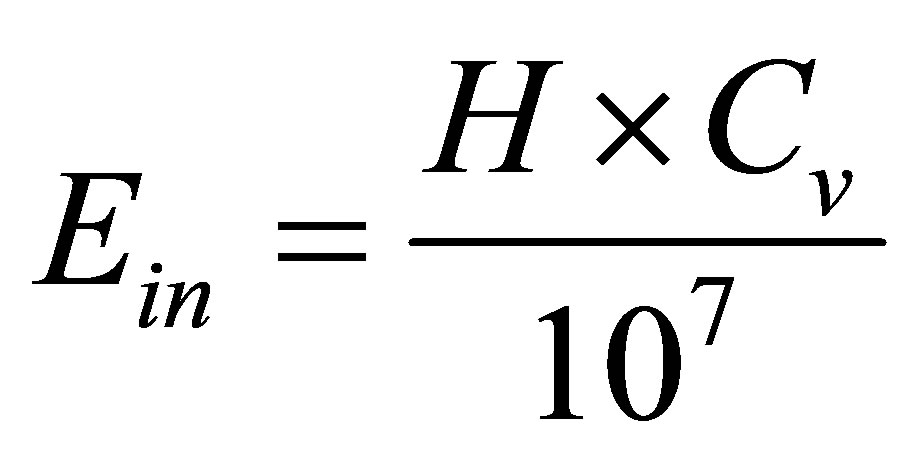 (1)
(1)
where, Ein is Energy input in toe, H is Fuel consumed quantity (kg), Cv is Gross calorific value (kCal/kg).
Specification of value of energy [24]: The value of per metric ton of oil equivalent of energy consumed shall be determined by formula;
 (2)
(2)
whereP = price of one metric ton of oil equivalent (1toe);
Pc = average price of delivered coal;
Po = price of fuel oil;
Pg = price of gas as declared by Gas Authority of India Limited;
Pe = average price of one unit of electricity for industrial as specified by the respective State.
Electricity Regulatory Commission as on 1st April of the year.
Weightage of coal (Wc) = amount of coal consumed across all designated consumers in the baseline year (in toe)/(total energy consumption across all designated consumers in the baseline year (in toe)).
Weightage of oil (Wo) = amount of oil consumed across all designated consumers in the baseline year (in toe)/total energy consumption across all designated consumers in the baseline year (in toe).
Weightage of electricity (We) = amount of electricity consumed across all designated consumers in the baseline year (in toe)/total energy consumption across all designated consumers in the baseline year (in toe).
3.1.2. Specific Energy Consumption (SEC)
The overall depth of the target will be set to achieve approximately 6.6 million metric tonnes of oil equivalent (mtoe) saving during the first cycle of the scheme. Thus total energy consumption will be 6.6 m mtoe less than would have been the case had energy intensity remained constant over the period. This overall target is apportioned across energy intensive sectors using a pro-rata approach. This means that a sector that consumes more energy shall be apportioned a larger portion of the energy saving estimate [25,27-29]. The specific energy consumption (SEC) means the ratio of the net energy input into the DC boundary to the total quantity of output exported from the DC boundary, calculated as per the formula in Equation (3):
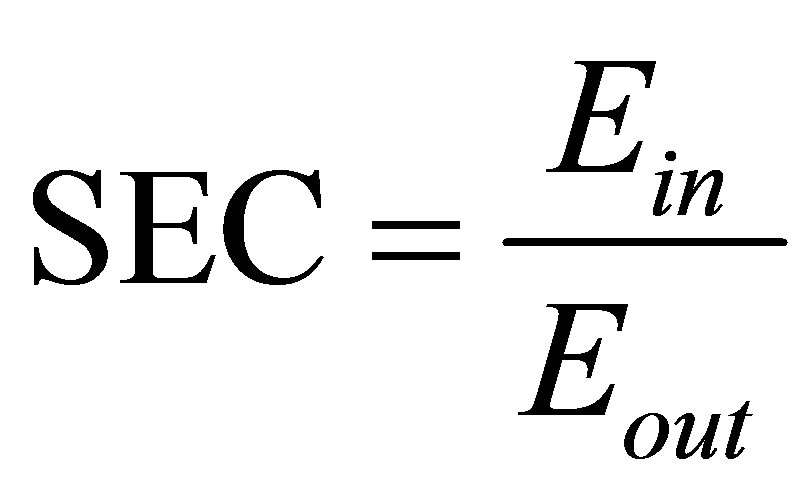 (3)
(3)
and expressed in terms of the metric ton of oil equivalent (toe)/per unit of product;
Ein = Net energy input into the designated consumers' boundary;
Eout = Total quantity of output exported from the designated consumers’ boundary.
In order to calculate the SEC, the definition of product is important, given the wide range of product mixes for certain sectors, but this is much simpler in case of thermal power sector. Each installation shall be assigned independent targets expressed as a percentage reduction with respect to its estimated baseline SEC.
The targets are worked out on the basis of ‘historical data’ on production and energy consumption as reported by installations participating in the scheme. This approach combines elements of historical performance and comparative benchmarking to establish targets that take into account current technology employed. This approach ensures more inefficient plants are assigned higher targets or larger percentage reductions with respect to their estimated baseline consumption.
The energy consumption norms and standards for power stations shall be specified in terms of specific percentage of their present deviation of net operating heat rate, based on the average of previous three years, namely financial year 2007-08, 2008-09, 2009-10 for the first cycle and for cycles thereafter from the net design heat rate [3]. The power stations shall be grouped into various bands according to their present deviations, of operating heat rate from design heat rate and for power stations with higher deviations the energy consumption norms and standards shall be established at lower level and shall be grouped taking into account percentage deviation as under: (Table 2).
3.1.3. Gate-to-Gate Designated Consumer Boundary for Power Plant
As the specific energy consumption is calculated on a Gate-to-Gate concept, the plant boundary shall be selected in such a manner that the total energy input and the Electricity output, is be fully captured at the entire designated consumers’ plant. Once the designated consumers’ boundary has been fixed, the same boundary shall be considered for the entire cycle, and any change in the said boundary such as capacity expansion, merger of two plants, division of operation etc. shall be duly intimated to the Bureau of Energy Efficiency. Electricity generated by captive power plant (CPP), other energy purchased and consumed, electricity partially sold to grid from captive power plant is as shown in Figure 2.

Table 2. Reduction target for net station heat in thermal power plant.
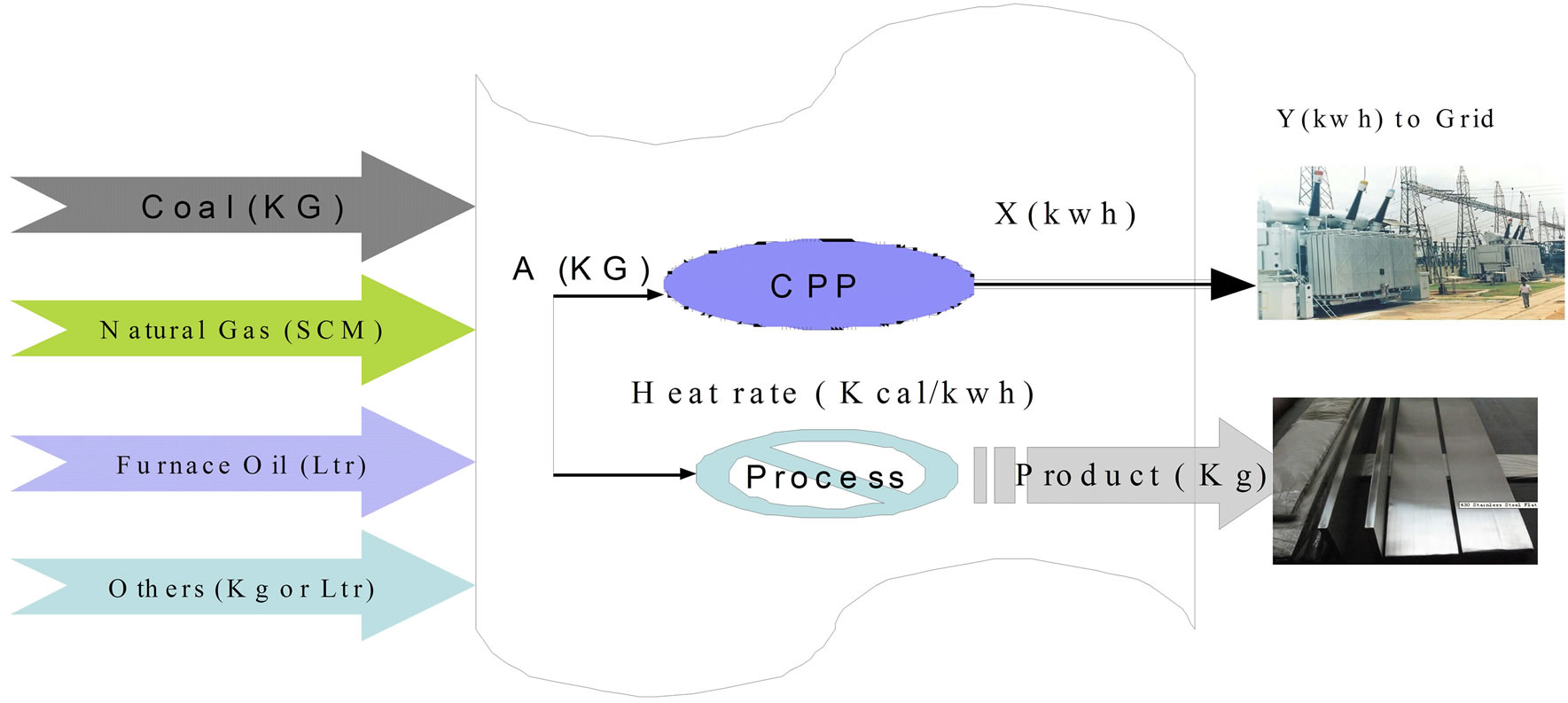
Figure 2. Captive power plant (CPP)-Electricity partially used for own process and spare supplied to grid.
3.1.4. Correction Factor Considered for Effect on Heat Rate Due to Coal Quality
Average “ash”, moisture, and gross calorific value for the previous three years is considered for the calculation baseline for first cycle. For consequent cycles the value will be taken as specified for the target year shall be taken into account for the baseline year and correction factor shall be worked out based on the boiler efficiency formula as in Equation (4) [3,26]:
 (4)
(4)
where:
η is Boiler Efficiency, A is Ash percentage in coal, M is Moisture percentage in coal, H is Hydrogen percentage in coal, G.Cv is Gross calorific value in kcal/kg and Station heat rate (Kcal/kWh) = Turbine heat rate/ Boiler efficiency.
3.1.5. Methodology for PAT Implementation
The proposed methodology for the phase wise implementation of the PAT programme [2];
• Identification of Industry sector on study of energy consumption pattern and phase in potential designated consumer in the scheme.
• Appoint Energy Manager and expose him/her to PAT, BEE and DC targets.
• Registration for DC with Energy audit and energy saving plan as per regulation of Bureau of Energy Efficiency Regulations 2010.
• The designated consumers shall achieve compliance with the energy consumption norms and standards within a period of three years.
• BEE establishes base year and projected energy consumption and calculating the net energy input to the plant.
• Calculate the specific energy consumption for the baseline year as well as for the target year and normalise it by taking into account the capacity utilisation, mix of grid and captive electricity, and any other factor which affects energy consumption as specified in the Schedule.
• Audit by Accredited Energy Auditor based on document review and cross checks over the claim by energy manager.
• Accredited energy auditor shall report the results of his assessment in a verification report.
• State designated agency may convey its comments, if any [2].
• The accredited energy auditor in-charge of checkverification shall submit his report with due certification to the Bureau and the concerned State Designated Agency.
• The exact number of energy savings certificates to be issued to the designated consumer and the entitlement for such energy savings certificates after determining by the following formula for thermal power plant sector:
 (5)
(5)
No. of ESCert = number of energy savings certificates.
Qn = heat rate notified for the target year.
Qt = heat rate as achieved in the target year.
Eb = production in the baseline year in million kwh.
The total amount of energy savings certificates recommended under sub rule (2) shall be adjusted against the entitlement on conclusion of the target year as per the following formulae for thermal power plant sector:
1) Energy savings certificate to be issued after 1st year
 (6)
(6)
2) Energy savings certificate to be issued after 2nd year
 (7)
(7)
3) Energy savings certificate to be issued in the target year
 (8)
(8)
Qb = heat rate in the baseline year.
Qt = heat rate notified for the target year.
Eb = production in million kwh in the baseline year.
Q1, Q2, Q3 = heat rate achieved in year 1, 2 & 3.
• The accredited energy auditor observes an unfair gain due to the deficiencies, inconsistencies, errors or misrepresentation by the designated consumer. The value of the amount payable by such designated consumer shall be as worked out in the verification report plus twenty-five per cent. Of such value because of unfair practice used by the said designated consumer for obtaining unfair advantage.
4. PAT: Institutional Network for Implementation and Trade
The PAT mechanism is designed to incentivise enhanced energy efficient technology by industry than their specified Specific Energy Consumption improvement target in a cost-effective manner. The energy efficiency improvement targets are “unit specific” and each DC is mandated to reduce its SEC by a fixed percentage based on the SEC baseline within a sectoral bandwidth. The guiding principles for developing the PAT mechanism are simplicity, accountability, transparency, predictability, consistency, and adaptability. The PAT framework includes the elements for device methodology for setting SEC for each DC and its target for SEC reduction and verification of SEC of each cluster in specified period w.r.t. base line for the issuance of Energy Savings Certificates (ESCerts). The additional certified energy savings in the form of ESCert can be traded with other designated consumers who could use these certificates to comply with their SEC reduction targets. The ESCert will be traded on special trading platforms to be created in the two power exchanges Indian Energy Exchange (IEX) and Power Exchange India (PXIL). The BEE has also set up registry and exchanges for the trading of ESCert and creation of records for creation, trading and cancellation of ESCert to enable cross-sectoral use of ESCerts and their synergy with renewable energy certificates [2]. The individual mandatory targets for reducing specific energy consumption, which have been established for over 478 DCs could be achieved either by implementing measures in their respective facilities, or offset through the purchase of EScert [27].
The flow chart for institutional linkage in PAT Mechanism in India is shown in Figure 3, initiated by ministry of Power. The Ministry of Power is the nodal ministry for NMEEE mission and implement PAT programme through Bureau of Energy efficiency. The institutional network is proposed for PAT process which includes identification of DCs, calculation of SEC, audit, issuance of ESCert and trading [28,30-33]. The study also proposes an additional consolidated fund needs to strengthen country research & development (R&D) capacity, technology adoption risk, PAT programme for mini, small & medium enterprises (MSME) and insurance for any natural disaster event [34].
The identified designated consumer needs to share the energy consumption and enhanced energy saving information as specified in the PAT assessment document. The BEE designed format requires critical information on technology, energy consumption and saving on technology up-gradation. The Bureau of Energy Efficiency analyses the claim submitted by the energy manager, which may require coordination with State Designated Agencies (SDAs), Designated Energy Auditors (DENA) and third party auditors. In case of doubt in energy savings claim, the BEE auditor will conduct site audits. On completion of the monitoring and verification process by BEE, the PAT registry will issue the ESCert equivalent to saving on energy for that time period. In the first phase 2012-2015, the review will be done annually and hence the ESCert will be issued after April, 2013.
The ESCerts trading mechanism is designed in this study, to enhance the response on the PAT mechanism
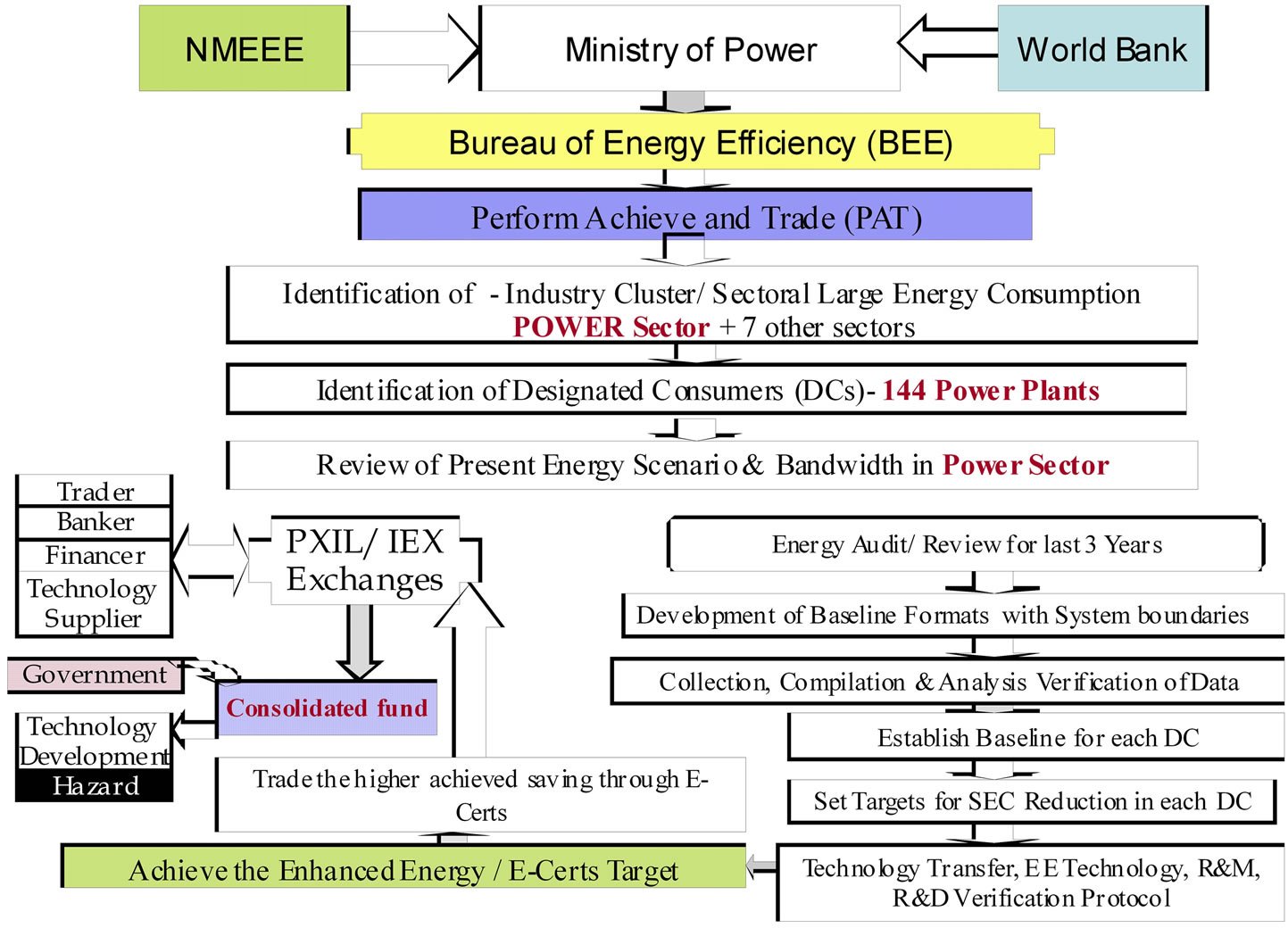
Figure 3. PAT programme implementation on power plant.
for the adoption by other energy intensive industries. This paper has identified important links for the issue and trade of ESCert between the industries, auditors and institutions from states and centre [19]. These links involve extensive information exchange between Designated Consumers, State Designated Agencies, Designated Energy Auditors, Power Exchanges, technology supplier, Bureau of Energy Efficiency and Central Registry on a regular basis. The central registry office is responsible for the creation of the information network and to timely share accurate information while maintaining confidentiality, transparency and security. The fast access and sharing of information can be achieved by adopting a suitable software platform. The Bureau of Energy Efficiency is working on developing the “PATNet”, a PAT control software which is an online integrated information system for operation and data management for creation, transfer, trading and cancellation of ESCert. The main features of PAT-Net are summarized below:
1) The proposed PAT-Net is a two way communication solution for PAT operation, connecting all the stakeholders and participants. It will function as an information consortium and provide limited controlled access to all the Designated Consumers, State Designated Agencies, Designated Energy Auditors, Trading Exchanges and the Central Registry. Each one of them will be provided with a unique access depending on their category, with user rights assigned accordingly.
2) Designated consumers will access to PAT-Net, for mandatory reporting activities. Energy Manager will submit self declaration of energy savings through the PAT-Net and in response BEE will consider the issuance of ESCerts. On successful review, BEE will upload online instructions to Central Registry for issuance of ESCerts to designated consumer. During the review process, BEE will share information on credit and debit of ESCerts with designated consumers through PAT-Net. The PAT-Net software will process the data from all DC and trading exchange on issuance and trade for the generation of reports for the analysis of the PAT programme. The results will also be used to assess DC performance and provide suggestion for improvement [35].
3) The Trading Exchanges could intimate the trade details and obligations to all the participating DCs, Central Registry, SDA and DENA [19,31] and conduct constant performance monitoring of the program. The performance will be reviewed through parameters such as total ESCerts issued & traded, complying sectors or participants and market liquidity. The administrator will identify any delays in the process-chain and initiate timely action. The information on SEC targets will be issued to DC through PAT-Net and reconciliation be carried out on the issue of ESCert or penalties.
BEE will share the rich technical experience of Central Electricity Regulatory Commission (CERC), which has successfully commissioned the renewable energy certificates (REC) scheme in India. RECs are traded on two exchanges, PXIL and IEX, and BEE will plan the trading platform for ESCerts. The roles for independent sector/ trade associations in parallel with CERC and BEE should be redefined [31,36].
5. Conclusion
The PAT mechanism, with additional institutional network, will give boost to enhance energy efficiency technology driven industries. The successful implementation of PAT scheme will also provide a breakthrough in research by the industries on energy efficiency technology and process. The paper proposes to use the same platform for the trading of PAT and REC at two exchanges already started PXIL and IEX with different controlling institutions in the interactive mode with international programmes like CDM, UNFCCC and World Bank. The operational PAT mechanism focuses on large industries and this paper highlights the missing link for Mini, Small & Medium Enterprises (MSME), which has the major impact on the energy consumption and economic growth of developing country like India. To ensure liquidity and demand for ESCerts, bulk buying and bundling of ESCerts should be encouraged, with open ended time limit for trading. Some of the issues that are being still to be discussed in order to enhance liquidity are intermediate compliance timeframes to enhance market liquidity, energy allowances vs ESCerts, banking of certificates and start option for auctions and buy-back of ESCerts by the Government agency like BEE and CERC.
6. Acknowledgements
This paper is part of the ongoing research work at IIT Delhi and major initiatives from Department of Science & Technology for the promotion of “Global Technology Watch Group” under climate change programme. The authors gratefully acknowledge the guidance, inputs and feedback from Dr. Sanjay Mishra, Dr. Nisha Mendiratta and Dr. Anand Kamavisdar. The authors are also acknowledge the Bureau of Energy Efficiency and Ministry of Environment and Forest, for sharing content and views about programme.